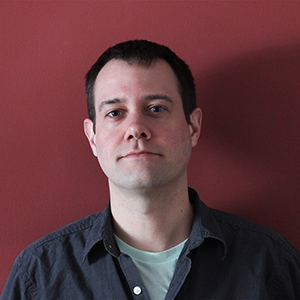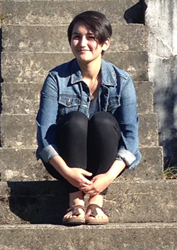Portrait of the Forgotten Memory:
L’Amour Lisik in Conversation with Matthew Hollett

Malahat marketing intern L’Amour Lisik talks with Matthew Hollett, winner of the Open Season Awards (creative nonfiction category) for 2017 with his memoir, “Kiki, Out of Focus.”
Read what contest judge Molly Peacock had to say about Hollett’s winning creative nonfiction piece.
As a visual artist and poet, do you find that your art and poetry intersect with your creative nonfiction work? If so, in what ways do they influence each other? What current and future works are happening for you?
I used to describe myself as a visual artist who writes a lot, but I think I’m becoming more of a writer who takes a lot of photos. I’m a very visual person, so my nonfiction and poetry often rely on observation and description, and I especially enjoy writing in response to images.
Over the past few years I’ve been making artist’s books such as Field Notes (a book of poems and photos about writing outdoors) and Small Landmarks (an ebook of photos and handwritten notes about walking). So my writing and visual art are basically one practice.
I’m finishing up a collection of poems about photography, and am also working on Album Rock, a book of nonfiction, poetry and photos about a strange photograph taken in Newfoundland in 1857.
I’ve also just begun a creative nonfiction fellowship with Newfoundland Quarterly, a magazine founded in 1901, and over the next ten months I’ll be writing my way through their extensive archives.
In your blog, you note that you’re particularly interested in “the city as palimpsest.” In “Kiki, Out of Focus,” this notion surfaces and resurfaces. Even the real Kiki fades behind the Kiki you remember. What initially drew you to this refrain of palimpsest?
This essay is about a time in my life when I had recently completed the MFA program at NSCAD University. I spent much of my time in Halifax walking around the city, writing and taking photographs, and my thesis exhibition at NSCAD was about walking as an art practice, and interstitial public space. I’m fascinated by the way history and memory are anchored to place, especially in the densely inhabited landscapes of a city. At the time I was reading a lot of books about walking, like Rebecca Solnit’s Wanderlust, W.G. Sebald’s The Rings of Saturn, and Lisa Robertson’s Occasional Works and Seven Walks from the Office for Soft Architecture.
Your piece focuses a lot on sense of place. Halifax and names of various east coast landmarks appear like old friends, no introduction given. Can you talk a bit about how and why Halifax, and the East Coast, figure into your work?
I grew up near Corner Brook, Newfoundland, and have lived in Montreal, Halifax, briefly in northern California, and in St. John’s now for a couple of years. I’ve spent a lot of time walking in all those places, and the act of traversing a city on foot has become an important part of my creative process. It’s how I find things. A lot of finding happens in this essay—a map of Budapest, an old children’s book, friends, a lost camera.
There are several references to time and space throughout your essay, which you’ve written six years after your time spent with Kiki. You mention, “those last days in Halifax were a time when I could have made any number of decisions, and Kiki was a gravitational force passing close enough that she shifted my orbit a little,” which is a sentiment that I think many can relate to. Do you think retrospect enhanced this essay? Would you have come to the same realizations without six years’ time to mull over your memories?
It’s certainly true that if I written this essay sooner, I wouldn’t have pieced the writing together in exactly this way. With time certain memories become more vivid—the essay compares these to cornerstones—while others fade. And your life carries along differently than you might have imagined, so you end up with a different perspective.
My strongest memories are always from times in my life when I’ve been writing a lot. In Halifax, as mentioned in the essay, I carried a notebook everywhere. When I write nonfiction, I often dig scraps out of old journals and use them. Sometimes I find things in there that I’d completely forgotten about. Are these still memories, or have they become something else?
In this essay, I wanted to create a portrait of a person who I didn’t know very well, but who had stuck in my memory. It’s a little like an impressionist painting, swatches of bold colour hinting at details that aren’t there. And of course it’s made of my memories, so it’s inevitably a self-portrait as well.
“Kiki, Out of Focus” is comprised of several fragments that weave together and apart, much like roads on a map. When you were constructing this piece, did the order of the fragments come naturally to you, or did you have to do some cutting, pasting, and rearranging?
I seem to write naturally in passages of about 500 words. I think that’s because I used to write by hand more often, and it’s about how much I’d write in one sitting. So when I’m working on nonfiction, I often have three or four short scraps like that, bits and pieces I’ve written at different times, and I start braiding them together. I can usually get a pretty good scaffolding for an essay that way, and that’s how this one came about.

L'Amour Lisik
* * * * * * * *









